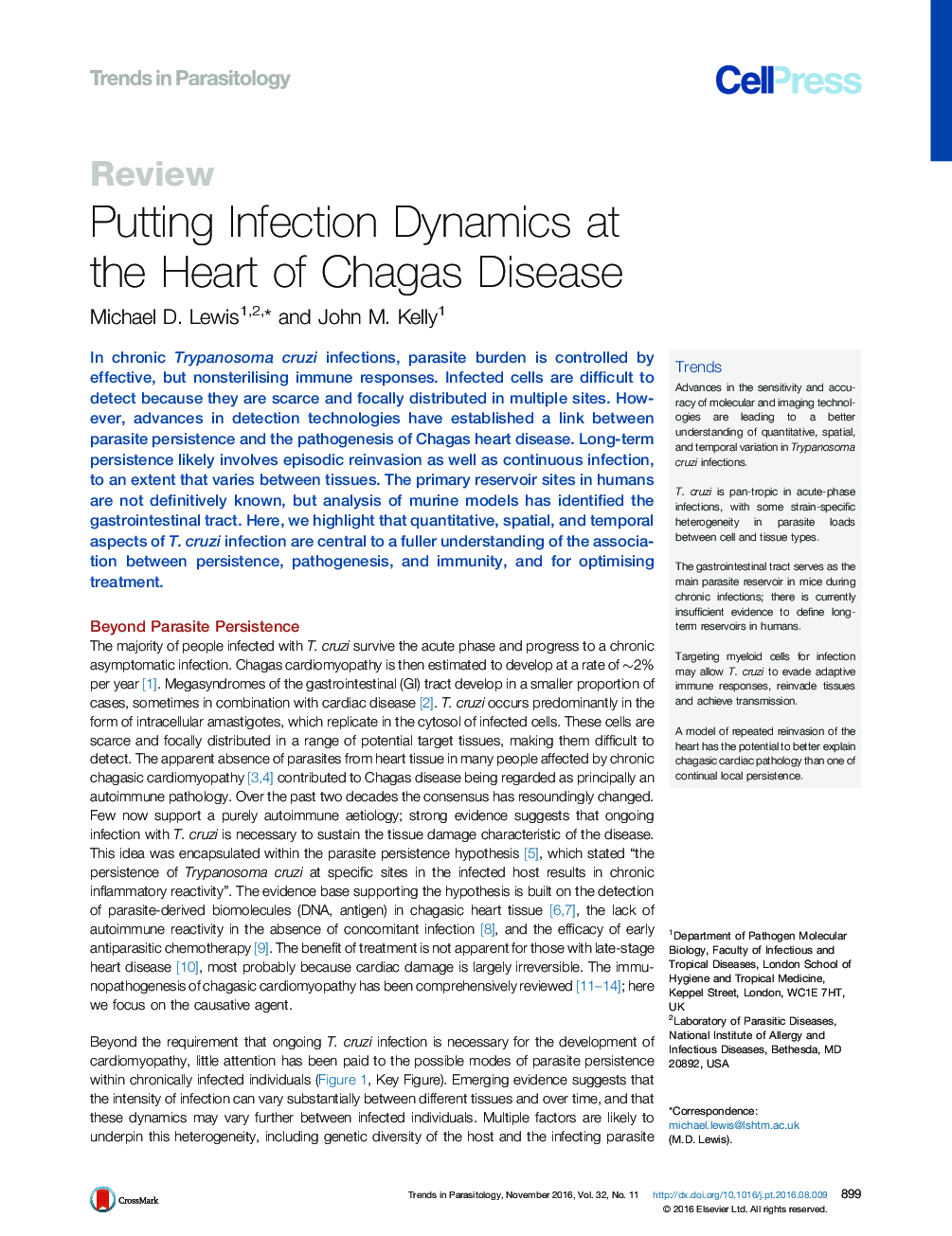| Article ID | Journal | Published Year | Pages | File Type |
|---|---|---|---|---|
| 5674779 | Trends in Parasitology | 2016 | 13 Pages |
Abstract
In chronic Trypanosoma cruzi infections, parasite burden is controlled by effective, but nonsterilising immune responses. Infected cells are difficult to detect because they are scarce and focally distributed in multiple sites. However, advances in detection technologies have established a link between parasite persistence and the pathogenesis of Chagas heart disease. Long-term persistence likely involves episodic reinvasion as well as continuous infection, to an extent that varies between tissues. The primary reservoir sites in humans are not definitively known, but analysis of murine models has identified the gastrointestinal tract. Here, we highlight that quantitative, spatial, and temporal aspects of T. cruzi infection are central to a fuller understanding of the association between persistence, pathogenesis, and immunity, and for optimising treatment.
Related Topics
Life Sciences
Immunology and Microbiology
Parasitology
Authors
Michael D. Lewis, John M. Kelly,
